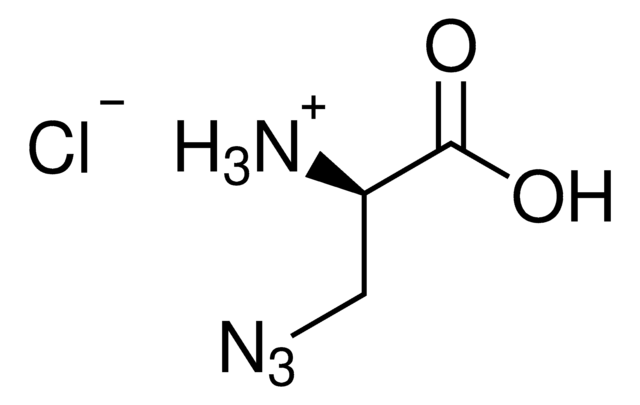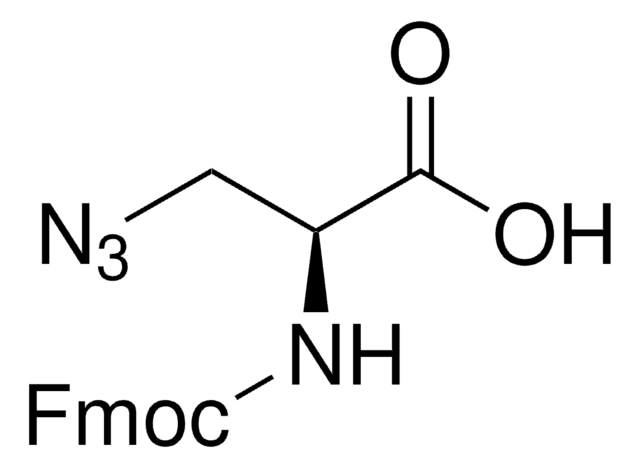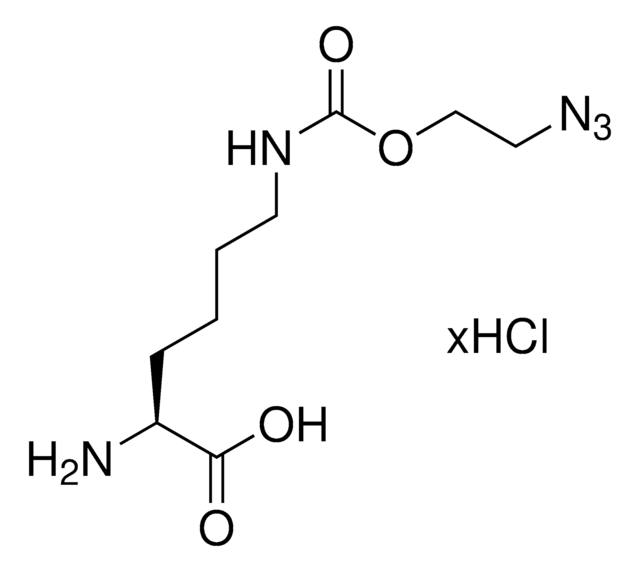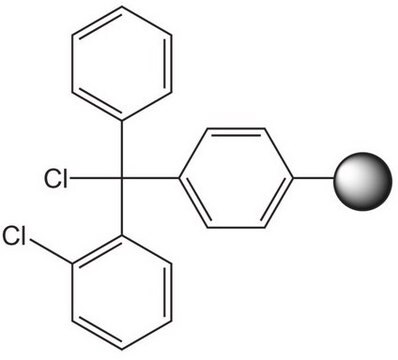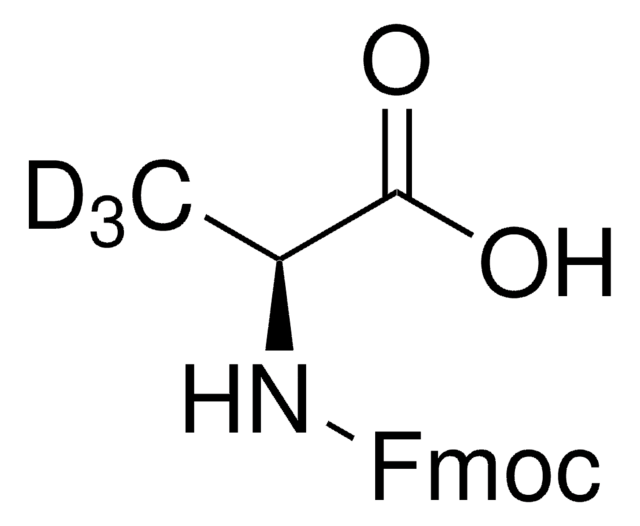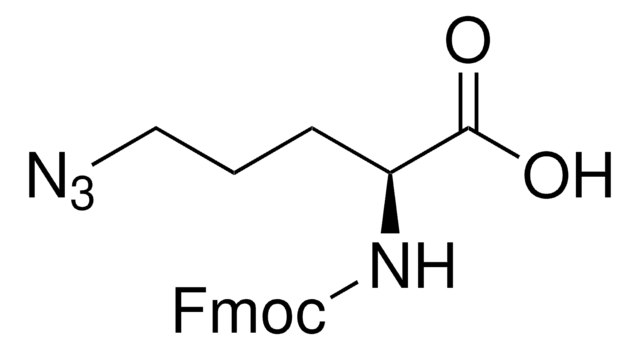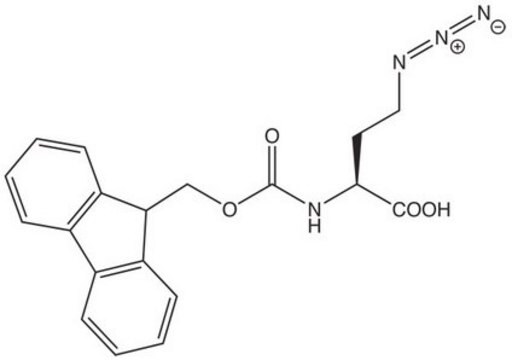Alle Fotos(2)
Wichtige Dokumente
900892
L-Azidohomoalanine hydrochloride
Synonym(e):
AHA
Anmeldenzur Ansicht organisationsspezifischer und vertraglich vereinbarter Preise
Alle Fotos(2)
About This Item
Empirische Formel (Hill-System):
C4H8N4O2 · HCl
CAS-Nummer:
Molekulargewicht:
180.59
UNSPSC-Code:
12352209
Empfohlene Produkte
Form
powder or crystals
Qualitätsniveau
Eignung der Reaktion
reaction type: click chemistry
mp (Schmelzpunkt)
139 °C
Lagertemp.
−20°C
InChI
1S/C4H8N4O2.ClH/c5-3(4(9)10)1-2-7-8-6;/h3H,1-2,5H2,(H,9,10);1H/t3-;/m0./s1
InChIKey
MHHYJRIDKLZZEO-DFWYDOINSA-N
Anwendung
L-Azidohomoalanine (AHA) is an amino acid analog of methionine that contains a very small modification, specifically an azido moiety. This compound can be fed to cultured cells and incorporated into proteins during active protein synthesis. Detection utilizes the chemoselective ligation or “click ” reaction between an azide and an alkyne or cyclooctyne. For example the azido-modified protein can be detected with either fluorescent alkyne or biotin alkyne. Detection sensitivity with these reagents in 1-D gels and Western blots is in the low femtomole range and compatible with downstream LC-MS/MS and MALDI-MS analysis.
Ähnliches Produkt
Produkt-Nr.
Beschreibung
Preisangaben
Signalwort
Danger
H-Sätze
Gefahreneinstufungen
Self-react. C
Lagerklassenschlüssel
5.2 - Organic peroxides and self-reacting hazardous materials
WGK
WGK 3
Flammpunkt (°F)
Not applicable
Flammpunkt (°C)
Not applicable
Hier finden Sie alle aktuellen Versionen:
Besitzen Sie dieses Produkt bereits?
In der Dokumentenbibliothek finden Sie die Dokumentation zu den Produkten, die Sie kürzlich erworben haben.
Expanding the diversity of chemical protein modification allows post-translational mimicry.
van Kasteren S I, et al.
Nature, 446(7139), 1105-1105 (2007)
Teresa Rayon et al.
Science (New York, N.Y.), 369(6510) (2020-09-19)
Although many molecular mechanisms controlling developmental processes are evolutionarily conserved, the speed at which the embryo develops can vary substantially between species. For example, the same genetic program, comprising sequential changes in transcriptional states, governs the differentiation of motor neurons
Unser Team von Wissenschaftlern verfügt über Erfahrung in allen Forschungsbereichen einschließlich Life Science, Materialwissenschaften, chemischer Synthese, Chromatographie, Analytik und vielen mehr..
Setzen Sie sich mit dem technischen Dienst in Verbindung.